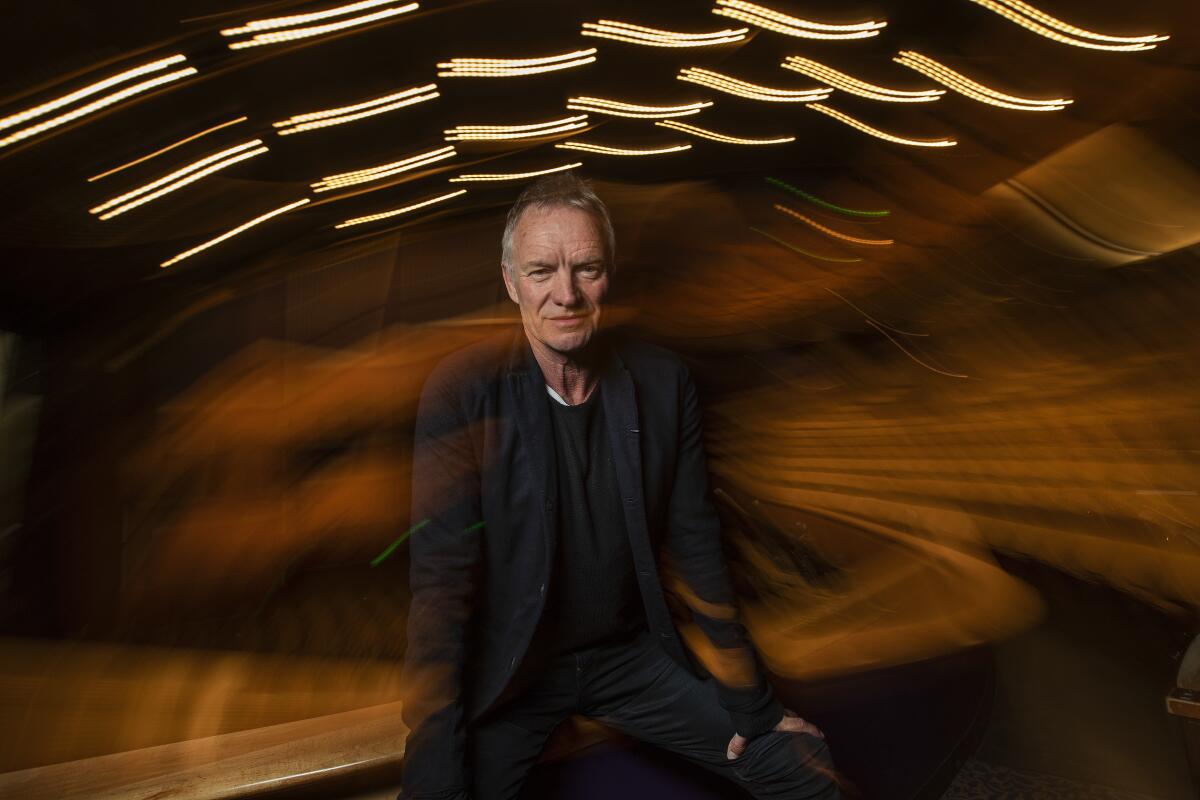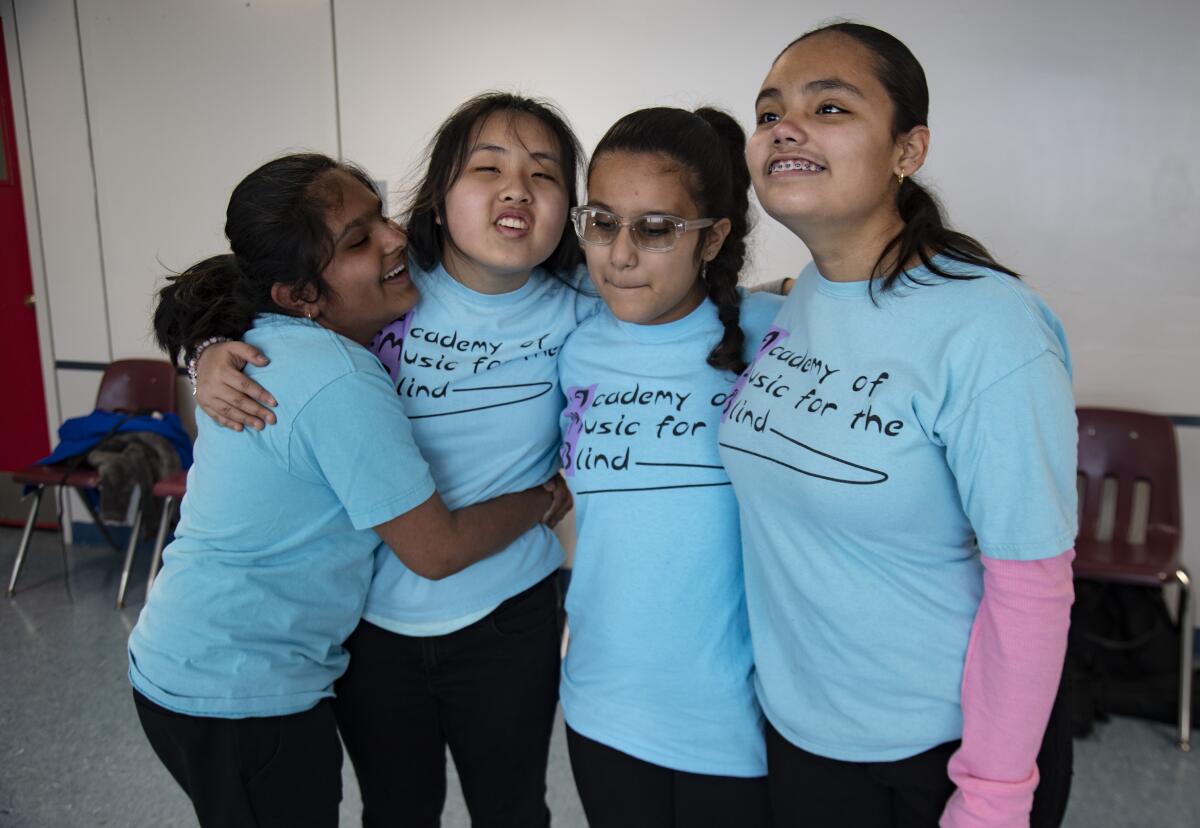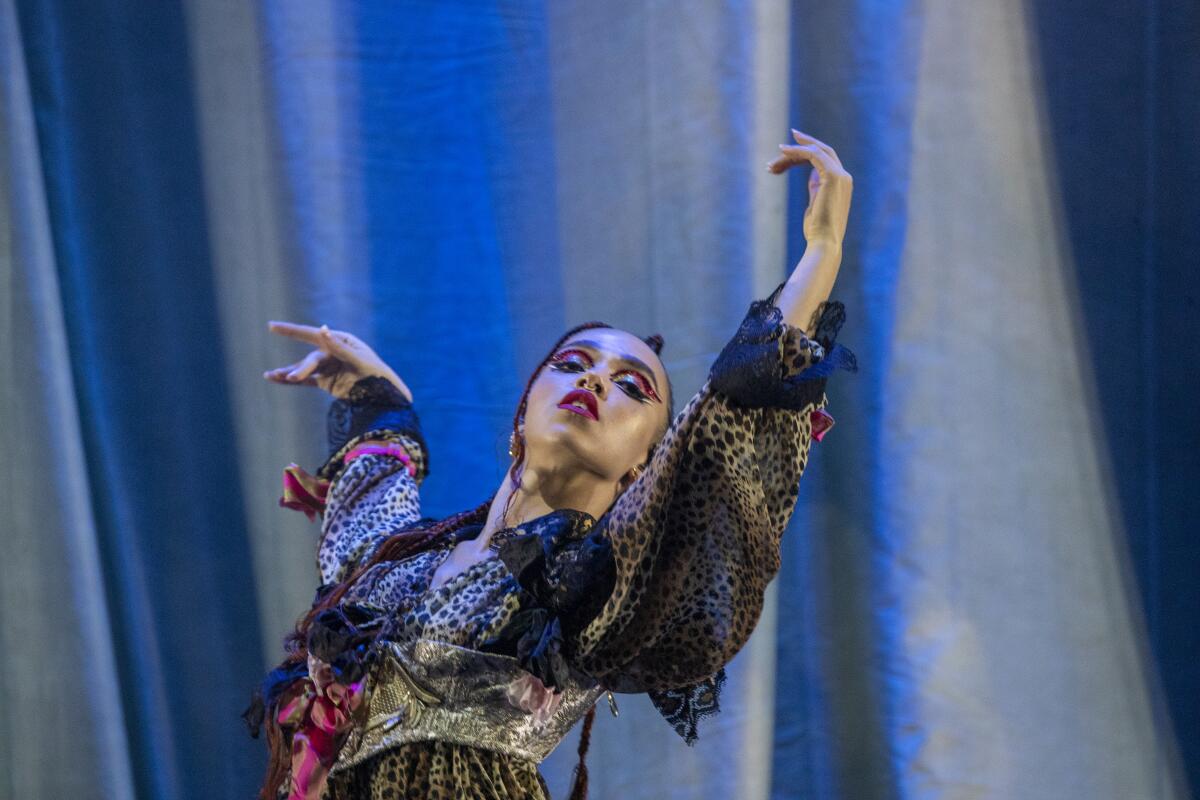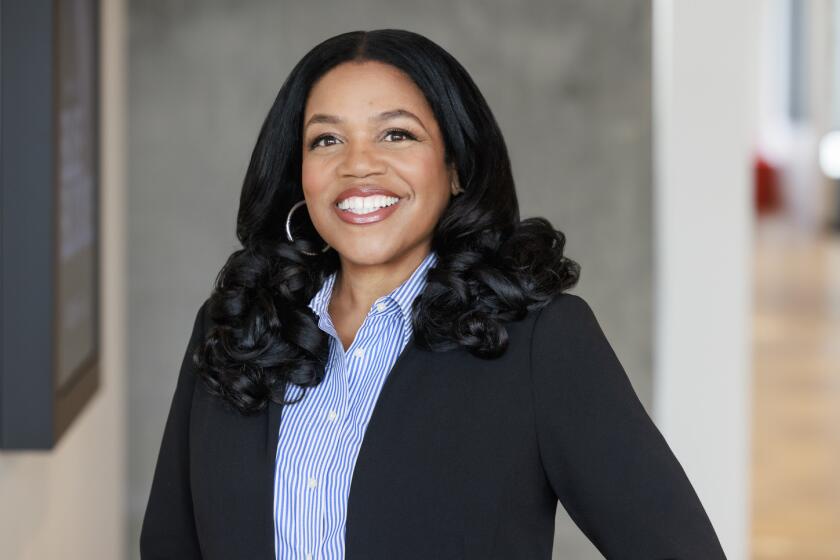Newsletter: Essential Arts: Our critic says Heidi Schreck’s ‘Constitution’ should be mandatory

Sting is at the Ahmanson. Heidi Schreck’s “What the Constitution Means to Me” is at the Taper. There’s a surreal dreamscape on view at the Vincent Price. And the L.A. Phil is feeling plucky. I’m Carolina A. Miranda, staff writer at the Los Angeles Times, with the week’s essential culture news (and copycat government logos):
Essential Image
The Getty Museum is displaying a trove of platinum prints from its collection — like this image by Scott B. Davis — that showcase the velvety nature of the platinum processing technique. On view through May 31.
On the stage
Heidi Schreck’s “What the Constitution Means to Me” landed at the Mark Taper Forum, and Charles McNulty begins his review “with a strong plea to every man, woman and mature teenager” in L.A. to go see it. At a time, he writes, “when the Constitution is being assailed by those who have sworn an oath to defend it, this buoyant and often-stirring civics lesson is the theatrical curriculum Americans desperately need.”
McNulty also reports that Sarah Ruhl’s 2003 play “Eurydice” is being transformed into an opera in a co-production between Los Angeles Opera and the Metropolitan Opera in New York. The score is by Matthew Aucoin, and direction is by Tony winner Mary Zimmerman. “Of all my plays,” says Ruhl, “‘Eurydice’ is the closest to poetry, where I started.”

Rogue Machine is staging Mike Bartlett’s 2010 drama “Earthquakes in London,” about a scientist who buries his climate research findings in exchange for funding from the airline industry. The play catches him in a moment of reckoning, as he comes to terms with his decision, as well as his three daughters. Philip Brandes reviews.
Make the most of L.A.
Get our guide to events and happenings in the SoCal arts scene. In your inbox once a week.
You may occasionally receive promotional content from the Los Angeles Times.
F. Kathleen Foley reviews Don Cummings’ “The Water Tribe” and she’s not a fan. “There’s a crucial difference between hooking viewers and alienating them,” she writes. “Don Cummings crosses that line — early and often — in his thematically confused play.”
Ship shape
Bringing “The Last Ship” to the stage has not been easy for Sting, who created the musical, inspired partly by his childhood in a ship-building town in England. The pop star sat down with The Times’ Jessica Gelt to talk about the show’s evolution from Broadway to the Ahmanson Theatre — a shift that now centers the story more on its women.
Times theater critic Charles McNulty reviews the show, noting that Sting “passes through the production with the rumbling chest, scratchy voice and hangdog look of his character.” But though the musical provides “ample opportunity for singers to soar,” there is “something inorganic about the relationship between story and song. The musical sprawls rather than flows.”

In the galleries
I recently traveled to an ebullient taqueria in Panorama City to interview the ebullient Gabriela Ruiz, who currently has a show on view at the Vincent Price Art Museum. The installation consists of an acid green room studded with sculptural video pieces that are like entering a surreal chamber of dreams. “This was like me opening my doors to you,” says Ruiz. “You are walking into my brain and seeing what I see.”

I helped push my out-of-gas taxi to a gas station near the border wall after seeing Irma Sofía Poeter’s two-part retrospective, currently on view on both sides of the U.S. and Mexico border. This includes a survey at the Tijuana Cultural Center (CECUT) and a smaller installation at San Ysidro community art space the Front. The artist, who is Mexican and American, is best known for textile works that elevate common craft objects into something more meditative.
Enjoying this newsletter? Consider subscribing to the Los Angeles Times
Your support helps us deliver the news that matters most. Become a subscriber.
Artist Matthew Barney has a new film out and it appears that it is not full of poop. “Redoubt” finds Barney scaling back, writes contributor Robert Abele, for “a relatively benign (in head-scratching matters), picturesque wilderness meditation that reimagines Ovid’s tale of Diana, goddess of the hunt, in Idaho’s staggeringly beautiful Sawtooth Mountains.”
Scarlet Cheng put on a pair of special booties to explore Oscar Oiwa’s “Dreams of a Sleeping World,” an immersive art installation at the USC Pacific Asia Museum that takes viewers into an 800-square-foot white nylon cocoon that is covered in a swirl of drawings.
The artist list is out for the Hammer Museum’s “Made in L.A.” biennial, which this year will feature the Huntington Library as a partner. The show, reports The Times’ Deborah Vankin, will be inspired by “entertainment, horror and the theater-film convention of the fourth wall.”
If you haven’t made it to Washington, D.C., to see the portraits of Barack and Michelle Obama at the National Portrait Gallery, they will land at LACMA in late 2021. Vankin has all the deets.
Classical notes
Contributor Catherine Womack reports on Acabella, an a cappella group for the blind that features the best female singers from Whittier’s Academy of Music for the Blind. This weekend, they will perform with the Pasadena Master Chorale. “We don’t all have the exact same voice or exact same style, but our voices come together into one,” says Dorothy Cho, 14.

Times classical music critic Mark Swed has been frequenting the L.A. Phil’s recent four-concert subscription series. On two evenings it was “thrillingly lively and provocative French early music” while on another two, John Adams was on hand to conduct the “rock ’n’ rollish” premiere of Julia Wolfe’s “Flower Power.” “Together they became amazingly relevant to discussions about the #MeToo movement,” he writes, “as well as imminent threats of military conflict and climate crises.”
The 1927 silent film “Sunrise: A Song of Two Humans” was a dreamlike story about marriage and temptation. Now the film can be seen — and heard — courtesy of a new score by Emmy-winning composer Jeff Beal. Tim Greiving reports that it will screen at Disney Hall on Sunday with the L.A. Master Chorale and the Eric Whitacre Singers supplying the sound.
Everything dance
If you’ve been following FKA twigs on Instagram (recommended), you’ll know that the singer has spent many months perfecting her pole-dancing technique. The Times’ Makeda Easter finds out why — and the ways in which the singer incorporates movement into her work.

Ready for the weekend
I round up all the art happenings in my weekly Datebook, including a show of Sandy Rodriguez’s new works at Charlie James Gallery.
And the indefatigable Matt Cooper has the eight best things to do around L.A. this week, as well as the week ahead in classical music, theater, dance and museums — including a show of Metallica frontman James Hetfield’s collection of classic cars at the Petersen. Duuuuude.
In other news
— How a stolen Nepalese deity ended up at a museum in Dallas.
— The Lamb of God in the Ghent Altarpiece has a new look — and it’s freaking everyone out.
— The SoCal Museums Free-for-All is this Saturday, with more than 40 institutions waiving admission.
— The second iteration of Frieze Los Angeles will include an Asian-focused film series organized by curator Venus Lau.
— Speaking of film, the Lucas Museum has acquired the Separate Cinema Archive, an important trove of black film history.
— Wax on. Wax stage left. “The Karate Kid” musical is in the works.
— Frank Gehry talks to critic Justin Davidson about art, architecture, tech and giving a Spanish reporter the finger.
— “The geography of Dallas is a geography of race.” Architecture critic Mark Lamster on why it’s time for Dallas to think big as it creates a memorial to victims of racial violence.
— Volunteers in Oakland are creating an unapproved tiny home development on a traffic median.
— Must-read: a fascinating story about art, power and inequity in Marfa, Texas.
And last but not least ...
The newly unveiled logo for U.S. Space Force seems mighty familiar.
The biggest entertainment stories
Get our big stories about Hollywood, film, television, music, arts, culture and more right in your inbox as soon as they publish.
You may occasionally receive promotional content from the Los Angeles Times.




